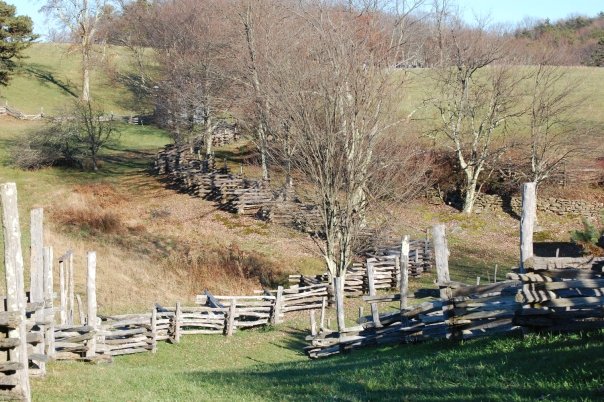
Hensley Settlement
Photos on this page are courtesy Cassie Haggard, Asbury College Journalism graduate, Girl Scout administrator and avid outdoorswoman.
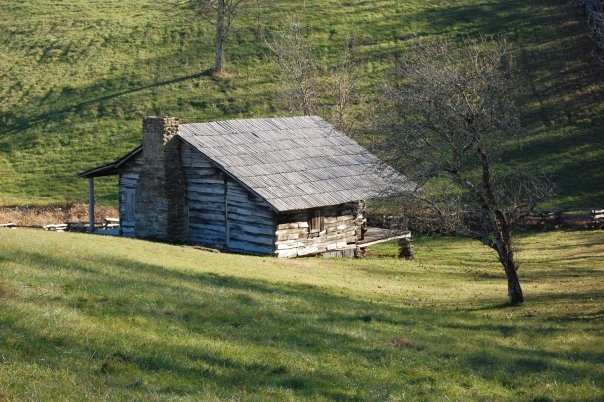
| Route 66 | Cities | Beaches |
 |
Hensley Settlement Photos on this page are courtesy Cassie Haggard, Asbury College Journalism graduate, Girl Scout administrator and avid outdoorswoman. |
 |
Getting There |
Camping |
Restaurants |
Hiking |
Cudjo's Cave |
History |
|||
| Hensley Settlement is a Kentucky treasure. It is the finest remaining example of what a real Appalachian Mountain village looked like in the 1700s, 1800s and early years of the 1900s. Every school in Kentucky should bring every student here at least once so they can experience what life was like before electricity, before cars, before everyone moved into cities, suburbs and small towns. This is not Walt Disney World. Hensley Settlement has not been cutened up, sanitized, or neatly arranged into a compact display. Fences and buildings here ramble along the landscape with plenty of open space in between. Hand hewn timbers, logs and boards do not always line up perfectly and houses, barns and out buildings are propped up by rocks. Glass had to be brought in by mule drawn wagon so was used sparingly. Nevertheless, real people homesteaded this land, several generations were born, lived out their lives and are buried here, and the community prospered despite its rugged isolation. That's Cassie posing with her backpack at the door to one of the smaller cabins. Notice the door is a bit small even for her and would much too small for a 21st Century male. Kentuckians were, on the average, much shorter back then. | 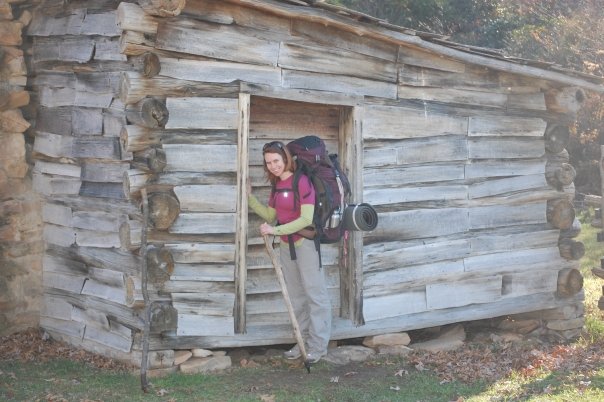 |
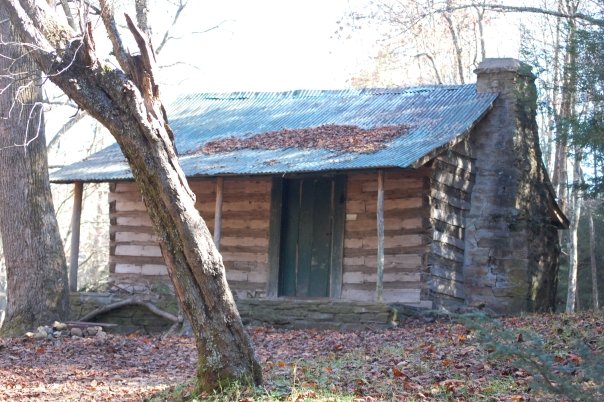 |
Sherman Hensley founded the settlement and most of its residents were either related to him, descended from him, or married to someone who was. They built the cabins and farm buildings mostly from chestnut logs. Cumberland Mountain, high and exposed, experienced long and hostile Winters, so cabins and barns had to be built strong, wind and water tight, able to hold in fireplace heat. Notice the lack of windows in the cabins above and here at left, and the shake roofs. These cabins required annual maintenance. Joints, roof shingles, and the chinking between logs had to be checked and repaired or replaced after every Winter. However, the logs themselves were thick and solid and did a good job of keeping out cold in the Winter and heat in the Summer. As long as these cabins were kept watertight and fires were kept glowing in the fireplaces, they provided warm, snug shelters. Camping is not allowed at Hensley, but you can rent a cabin. |
| These are primitive cabins. You bring your own sleeping bag, cook stove and cooking utensils. What you get are bunk beds, a table, a fireplace, and shelter from the weather and animals. You'll have to go out and forage for your own wood (collect downed branches only) and you'll need a folding backpacker's saw to cut it up. But a good fire in the fireplace does heat the cabin up nicely and even on a frosty mountain night you can feed the fire a few times and wake up quite toasty in the morning. You'll need to cook dinner and breakfast either outside or (in the event of rain) in the doorway for obvious reasons, and meticulous cleanup is essential. | 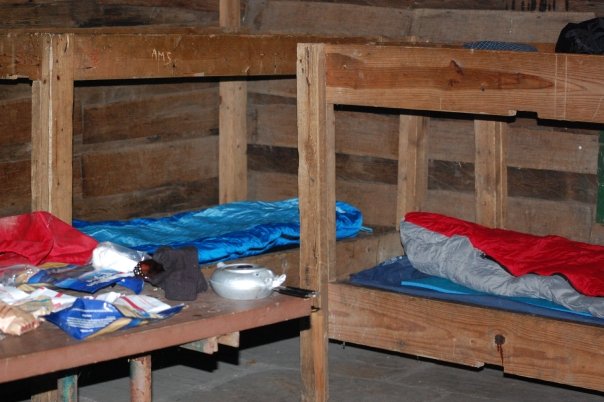 |
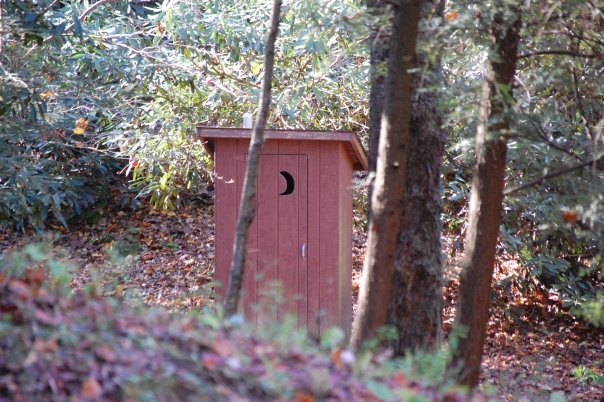 |
There are no showers available at Hensley Settlement or either of the nearby camp grounds. If you want hot water to wash or shave with you'll need to heat it yourself. There's a Settlement water faucet along the trail coming in from Martins Fork. There are outhouses like this luxury model within a reasonable walk from the cabins. During the Summer months they're kept stocked with toilet paper, but in the early Spring and late Fall you might want to bring your own just in case. |
| You could spend two nights at one of the Hensley cabins and hike the area during the day. There's plenty of walking to do just exploring the settlement, and there are day hikes possible in all directions. During the Summer the park stations staff members at the settlement and you can elicit tons of information about the area just by talking to them. If you came in on the Ridge Trail, you could day hike down the Shilalah Creek Trail or Brownie Creek Trail. If you hiked up the Chadwell Gap Trail you could day hike several miles along the Ridge Trail. | 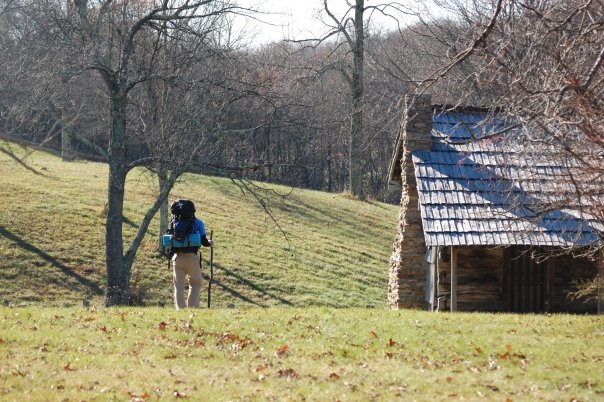 |
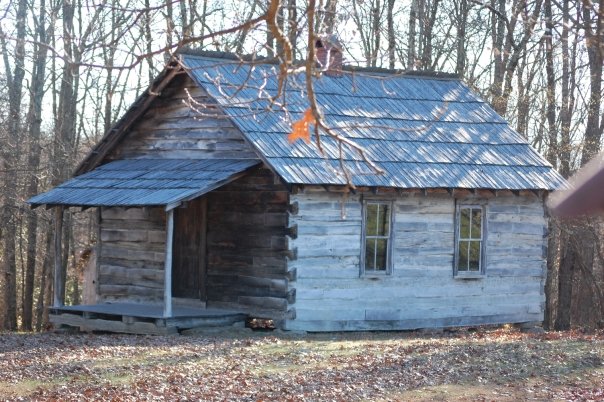 |
This is the Brush Mountain School House. It's not left open, but if you can locate one of the staff members they can unlock it so you can look around inside. Although it's small, this is very solidly built, one of the better executions of the Chestnut log cabin style they used for all their buildings. Brush Mountain never had a large enrollment; at its peak it had 15-20 students in grades 1-8. Students wanting a "high" education had to move down to Middlesboro and lodge with a town family during the school week, only returning to Hensley on weekends and long breaks. Middlesboro had the only high school in the county for a long time. |
| For all its rustic quaintness, Hensley Settlement was a prosperous farming community, very close to being self sufficient. The women raised "kitchen gardens" near the cabins for salad greens and vegetables. The men raised sheep, cattle, hogs and chickens for meat, eggs and dairy products. They raised rye from which their wives made breads. They raised corn, some of which they ate, some of which their wives pounded into meal, and some of which they distilled into corn whiskey. They kept bees for honey and to pollinate their crops. In the Fall the men would extract Maple Syrup from the trees in the surrounding forest. They foraged for Chickory, from which they made Coffee, and Sassafras, from which they made Tea. They raised Apple, Cherry, Peach and Pear trees. In addition to eating the fruit fresh or making cobblers, pies and other dishes, they also made Apple Cider and Cherry and Peach Wine. They raised five kinds of berries (strawberries, raspberries, black raspberries, blueberries, eldeberries), some of which they ate fresh, some of which they made into cobblers and pies, some of which they made into jelly and preserves, and some of which they made into Eldeberry Wine. The men also hunted. Diaries, journals and letters recall that they ate very well. | 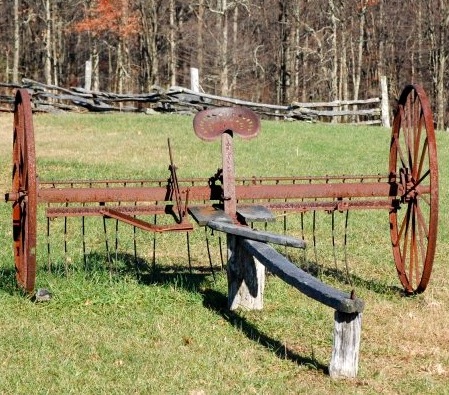 |
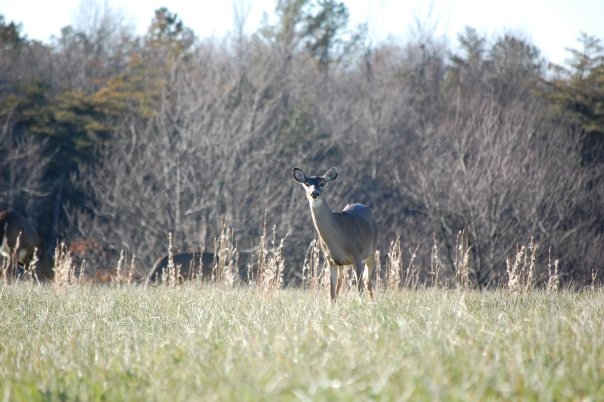 |
Both then and now, Hensley Settlement has been full of animals. You are guaranteed to see deer. There are also raccoon, possum, groundhog, wildcat, squirrels, chipmunk, rabbits and voles. When white men first arrived there were Elk and Bear on the mountain and Buffalo down in the valleys. By the time of Hensley Settlement the Buffalo were gone from Bell County. The Bear and Elk were still present, and the old diaries, letters and journals frequently mention seeing them not only in the surrounding woods but often in the settlement itself. The settlers wrote of eating Squirrel Rabbit Stew, Elk Stronganoff, Venison, and Jerky. They also mention making clothing and furnishings out of coonskin, deerskin and bearskin. Hensley residents were still leading basically a frontier existence long after Americans "down below" had electricity, cars, phones, radios, and grocery stores. The settlement is the greatest window into frontier Kentucky we have. |
| When the National Park Service bought the mountain, they signed contracts guaranteeing that residents of Hensley Settlement could live out their lives on their property, but when they either died or moved away, their lands and buildings would revert to the park. The children drifted down to Middlesboro, Pineville, the town of Cumberland Gap, Harlan, and some as far as Lexington and Knoxville. One by one the older folks died or developed health problems and moved down with their children to be near doctors. By 1960 only two residents remained and they made the decision to abandon the settlement. The Park Service began in 1965 to restore and preserve the buildings. But every year, usually on Memorial Day, the descendants hike back up the mountain and spend a night or two at the old homesteads, placing flowers on graves in the cemetery and reminiscing about the lives their grand parents and great grandparents lived here. In the 2010 urban high tech world, places like Hensley seem like a separate universe. But this and thousands of places like it were the foundation for modern America. | 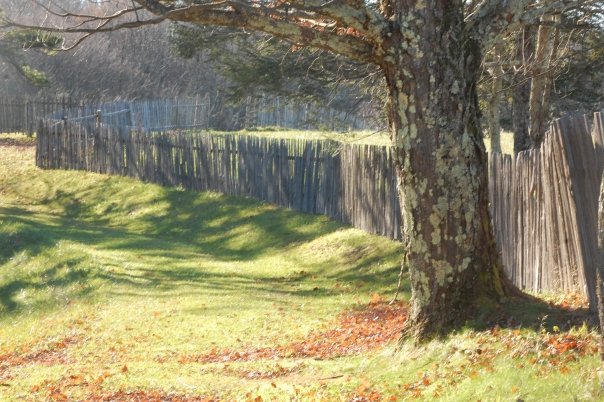 |
|
|||
|